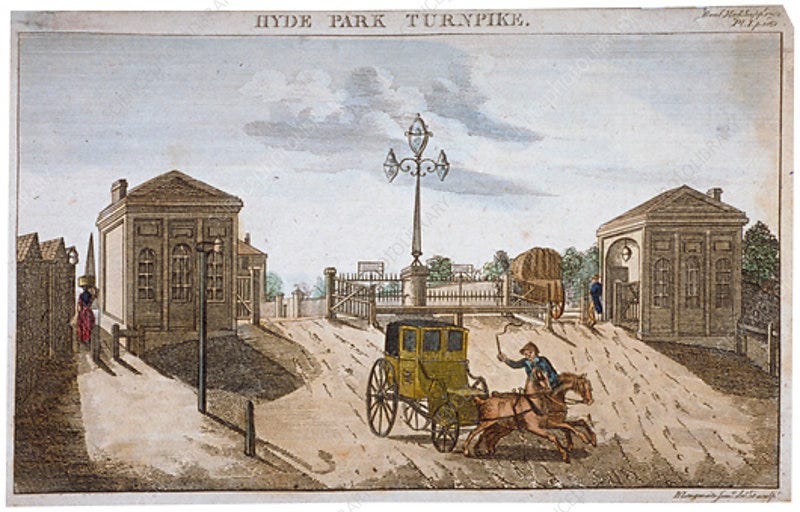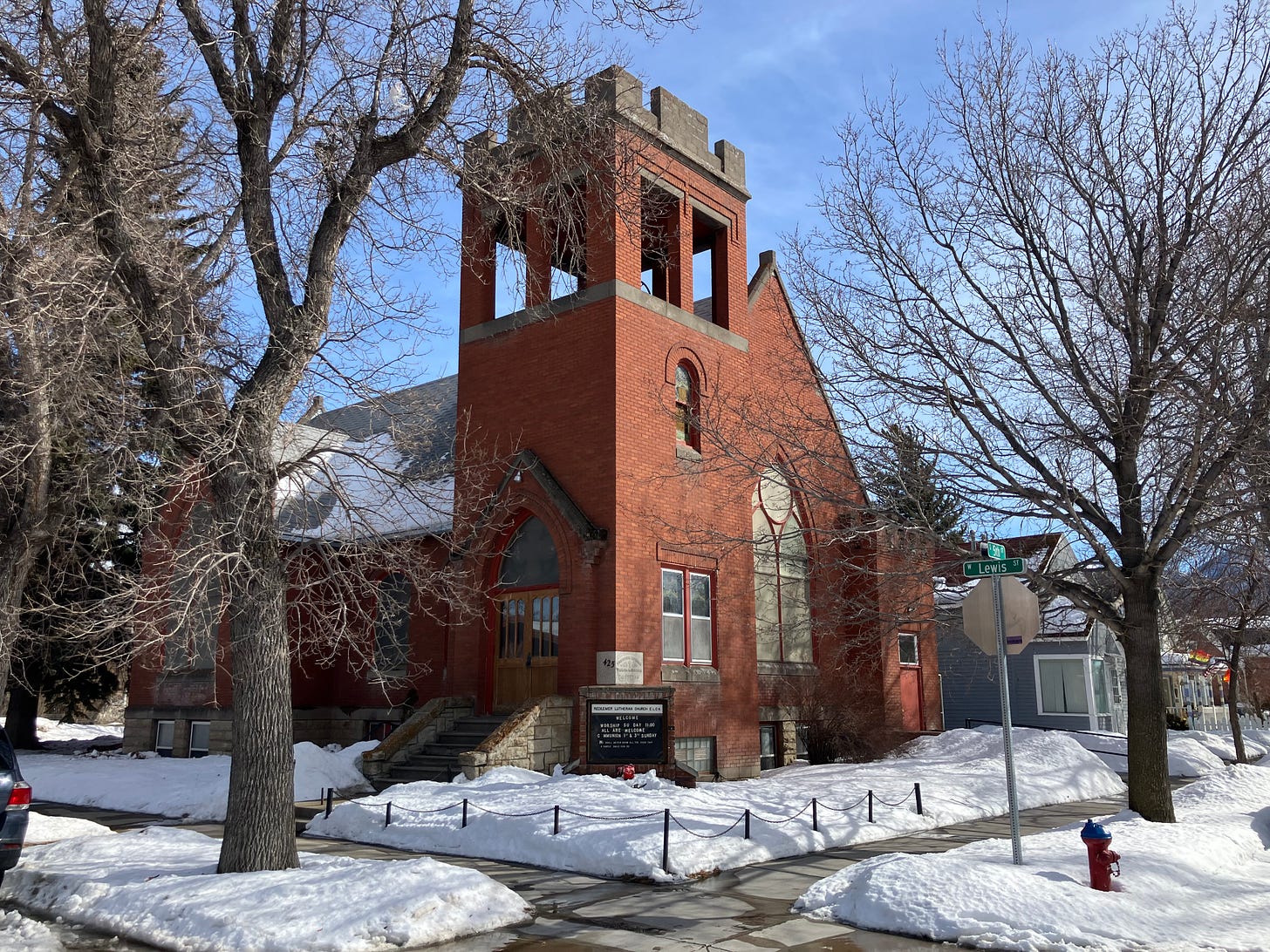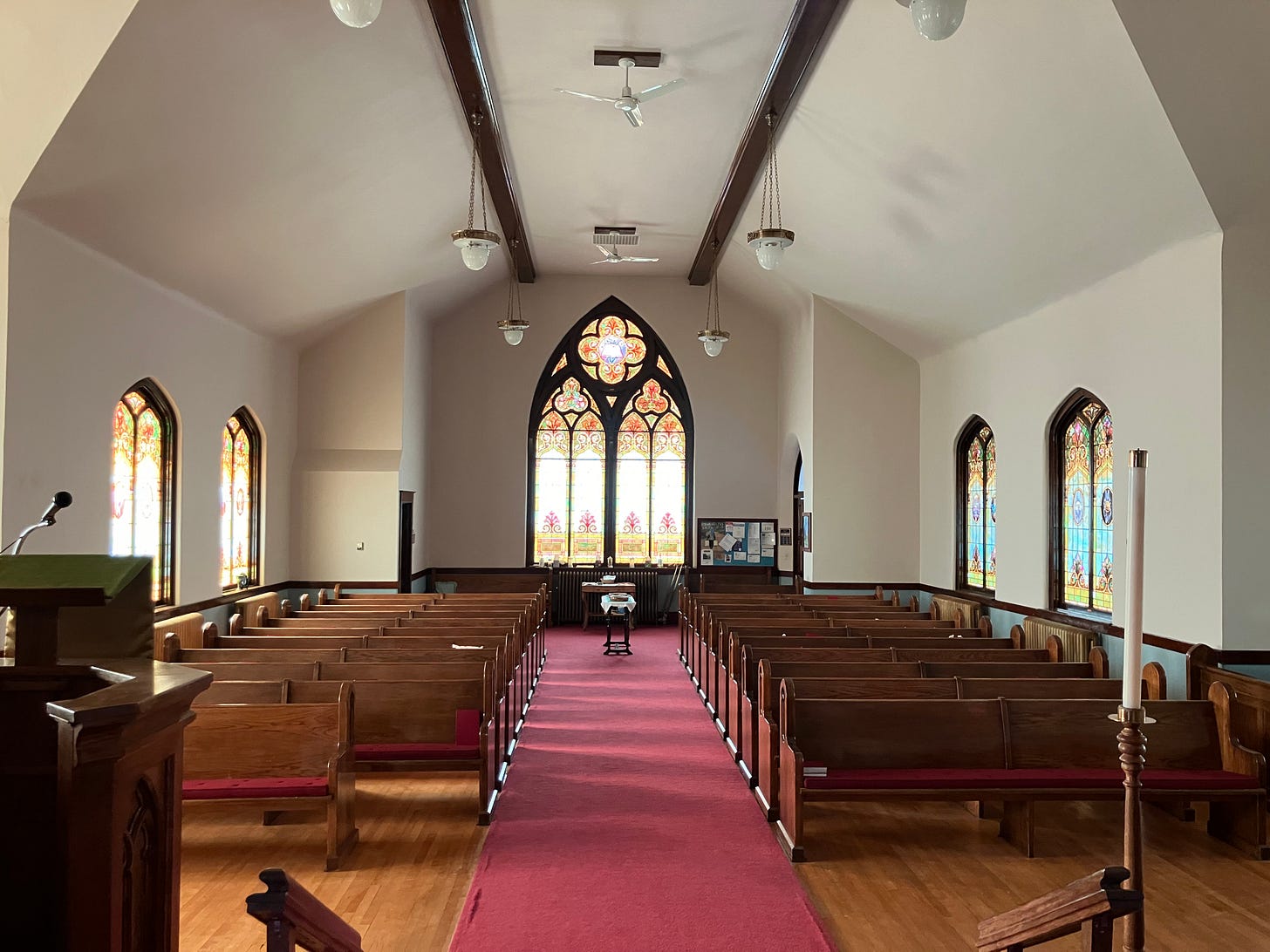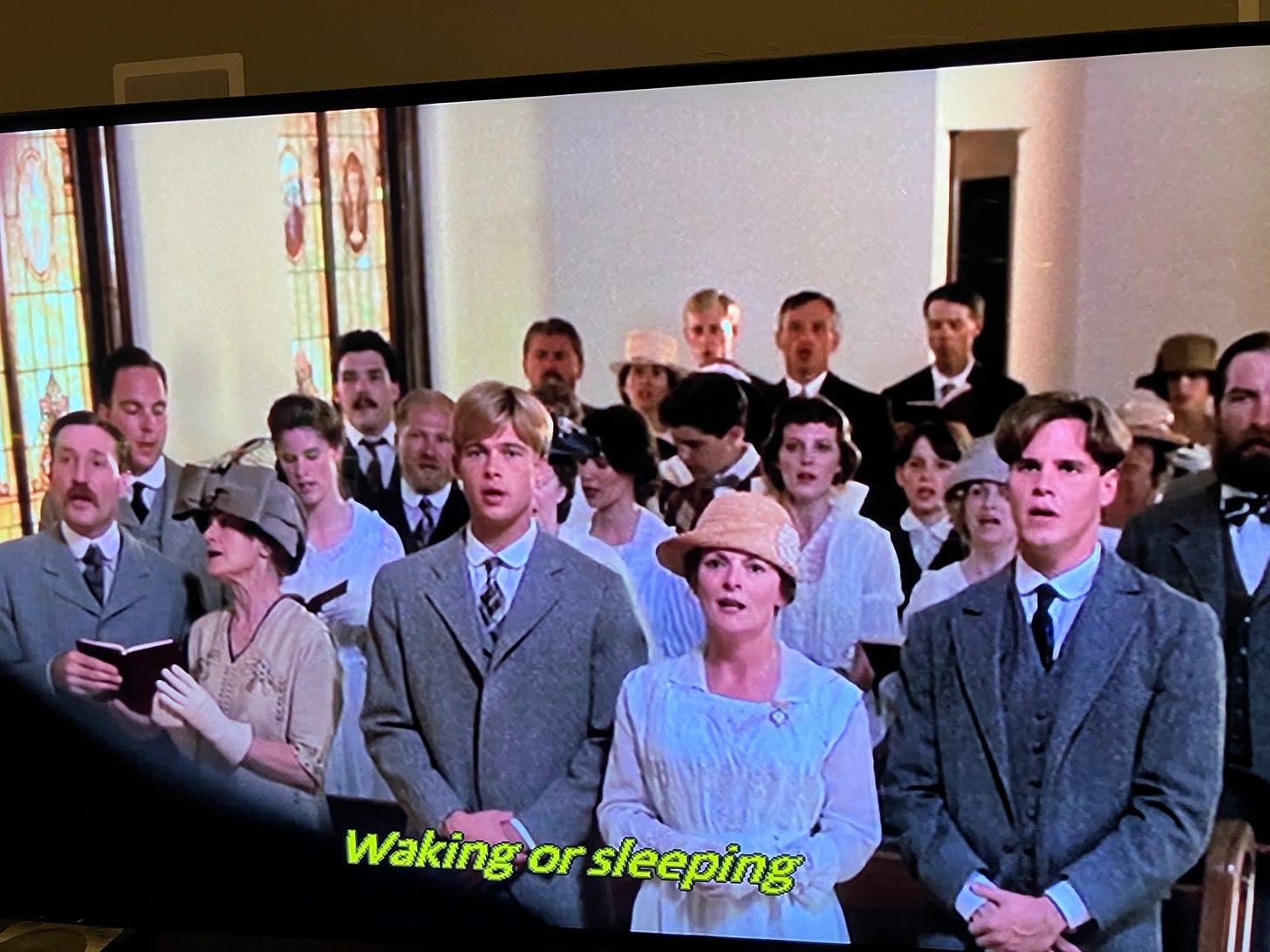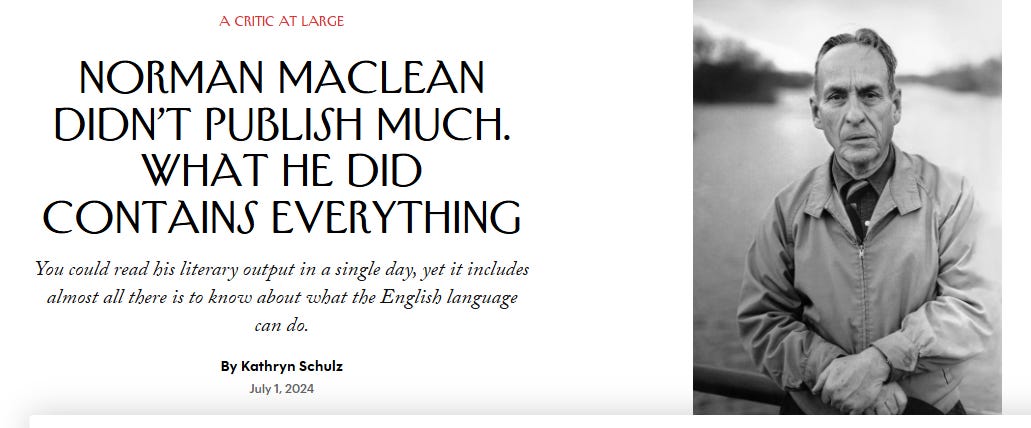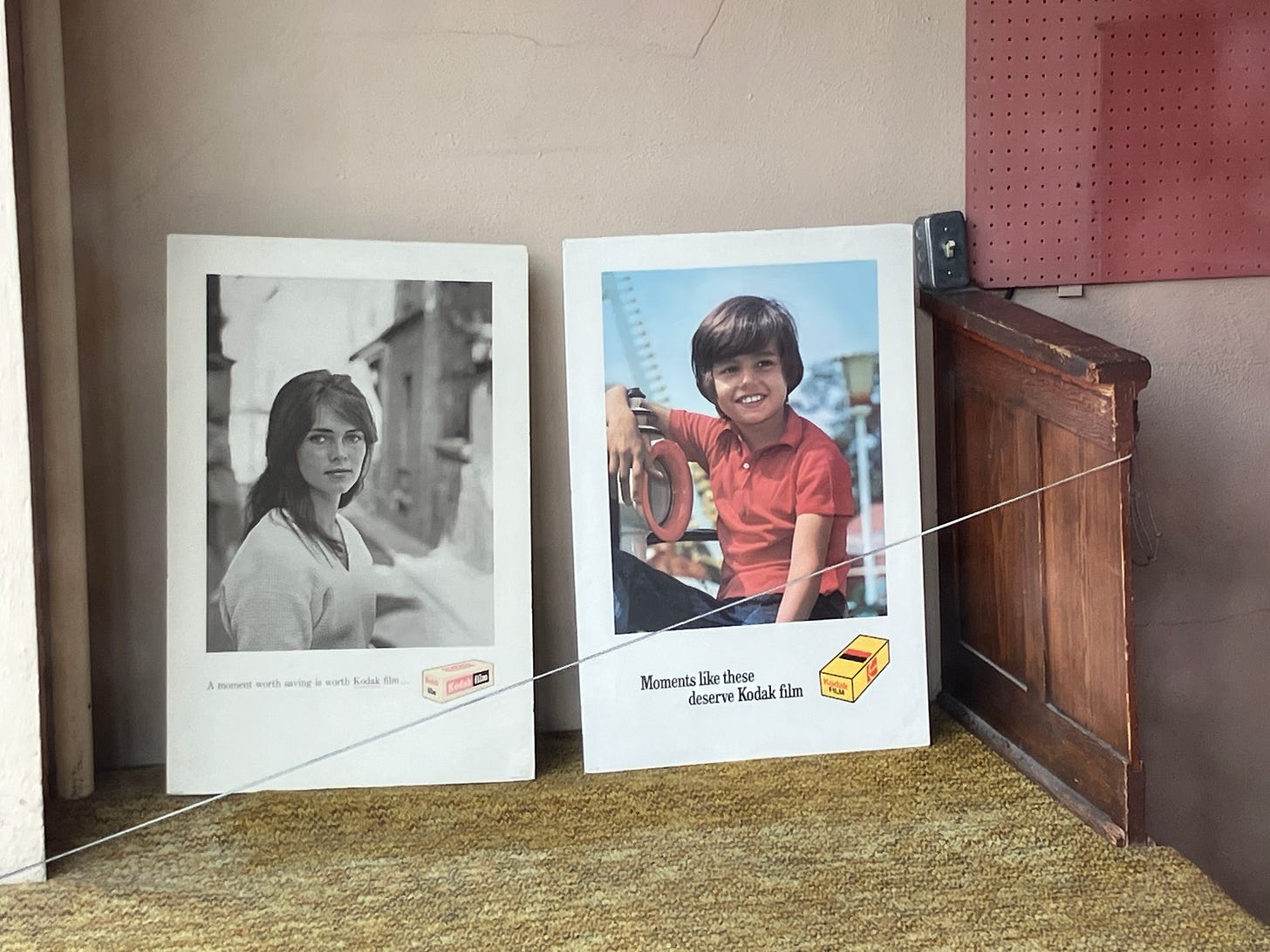The I-90 runs through Livingston, Montana. Well, not the old town, which is the part you want to see. It actually cuts the town on the southwest end, where you have newer developments like the freeway shopping area and such.
First off, why do we call it a freeway? The words motorway, expressway, and interstate are all pretty clear, but why free? I had always assumed that it was because the US Interstate system was meant to be free of charge, unlike a toll highway. I knew that California had express lanes that charged a fee, but you can still drive alongside on the same interstate on the free lanes. I’m not opposed to that, or user fees in many other areas, such as the state-park Discover Pass introduced in Washington State in 2011, which not only generates revenue and shifts some of the funding burden from general taxpayers to park users, but serves as a riff-raff fee. Thirty bucks a year and voilà!, half of the vibrant element that you would have had to share the state park with is gone. The fee isn’t so high that it excludes the working man; it simply means that a good chunk of the rough element- litterbugs, drunks, junkies, boombox hoodlums, poor-aim urinators, toilet paper in the toilet forgetters, nose-ring graffiti artists, neck-tat vandals and other ne’er do wells- don’t bother with the park, hence your visit is more pleasant and lil’ Kimberly and Timmy are much safer. As for exorbitant fees that exclude your average Joe, that would be the Mexican toll highway system, as I knew it in the 90s at least, which allowed the uber-rich, basement Ba’al worshippers to fly in their BMWs from Mexico City to their mistresses in Acapulco in no time, while the unwashed lumbered along the free roads, breathing dust and exhaust.
The idea of the US Interstate Freeways being free was dispelled as soon as I entered Illinois from Wisconsin on the I-94. The federal interstate webpage says that where fees are collected, federal dollars for improvement and such are withheld and reserved for toll-free sections of the interstate system. That sounds fair, I suppose, if true. However, in Illinois, land of Pritzkers and Sacklers, you have to wonder if they aren’t dipping out of two troughs.
“The cost of tolls for a round trip from Milwaukee to Chicago without an I-Pass is approximately $5-7 with cash, and half that with the I-Pass.” and the fees are only in the Illinois section. Sure, get the I-Pass so we can monitor your movements.
Here I must remind you of my upcoming Dictatorial Directive 37B: “Cash must be accepted at no extra charge wherever goods and services are sold.”
So why do they call it a freeway? According to my web searches, I’m partly right.
random Google commenter says, They’re “free” as in unrestricted - no cross streets, traffic lights and such.
Google AI says, The term "freeway" comes from the fact that these types of roads are meant to be free of obstructions, allowing for smooth and uninterrupted travel at high speeds. Moreover, traditionally in the U.S., freeways were toll-free, providing a "free way" for motorists to travel.
By the way, do you know where the term turnpike came from? A turnpike is of course a toll highway or freeway. It’s an old English term that comes from the roads that were blocked from access except at certain points of entry/exit where you had to pay a fee to get in. In ancient times they would turn the pike to let you in.
The title of this article is of course a play on the movie name, A River Runs Through It.
Why would I mention this movie? At this point in my trip, I’m already east of Bozeman, and the book/movie take place back west of the divide in Missoula, the Bitterroot Valley and surrounding fishing spots. It’s because I inadvertently visited the church where some scenes from the movie are filmed. The main character’s father is a Presbyterian minister and they chose the Lutheran Church in Livingston for the church scenes. It’s a gorgeous old church and the stained glass is beautiful.
It wasn’t until Sunday service was over that one of the congregants told me that this was the Brad Pitt River Runs Through it Church Scenes church. She said tourists come and ask, “Where did Brad Pitt sit?” I don’t think the Presbyterians felt too slighted by having these scenes in a Lutheran Church. They may have if they’d chosen a Baptist church, however. There’s a line in the book and movie that goes, The Burns family ran a general store in a one store town and still managed to do badly. They were Methodist, a denomination my father always referred to as Baptists who could read.
There are a lot of good lines in the book and it’s a great story which I highly recommend. It’s a book that you read and then hunger for more from the same author, then realize sadly that he only had one real novel. Here’s the title page from a New Yorker article last year:
Here’s the opening paragraph of that article: When I am stuck on something I’m trying to write and have exhausted all the other options—ignoring the problem, staring blankly at the problem, moving the problem around to see if it’s less annoying in some other location, eating all the chocolate in the house—I eventually do what I should have done in the first place and go read some writer who is much better at this business than I am. The candidates are legion. But, from the whole long, idiosyncratic list of authors I regularly turn to for intellectual and aesthetic resuscitation, one of the most consistently useful is Norman Maclean.
Unfortunately, the success of the book led to the successful movie, which in turn was probably part of the great influx of newcomers to the Bitterroot Valley, though I can’t blame anyone for coming here, being a newcomer myself. As for the movie, when I returned from my trip I ordered it and had it put on the hold shelf at my local library, then watched it one night during dinner with Kenny. We thought it was OK. If a movie is a banger, we keep watching after finishing our meal, otherwise we turn it off and go our separate ways. I asked Kenny if he wanted to keep watching and he said, “My sex-scene radar is beeping loudly so let’s turn it off.”
I’m with Kenny; I’ve never liked sex scenes in movies. Who likes that crap? I don’t like kissing scenes either. I feel about the same way toward TV or movie-screen intimacy as when I was six years old. And what’s with the obsession with TV shows showing people eat, taking huge bites of crumbly, gooey pie and oversized, drippy hamburgers and stuff? Is this all a feminine thing? OK, I digress. Anyway, we can agree that watching sex scenes with your kids is a huge downer, and probably a bigger downer for them. So we turned off the TV. But later I picked up where we left of and there was no sex scene- Kenny’s radar failed him. His expectation was that a sex scene naturally had to come up, based on the progression of the story, but director Robert Redford was able to imply that sex had taken place without throwing all the hump action in our face, which I guess is de rigueur for Hollywood ever since the end of the Legion of Decency era, before 1965. My birth year marked the end of decency in films!
At dinner a few days later, Kenny and I finished watching the film. Again, no sex scenes. My rating: 3.5 out of 5, nothing like the 5-star novel, but pretty good. Kenny thought it was fair. Handsome Brad Pitt, though highly praised for his role, thought that his performance was fair at best, and he didn’t do the novel, or Redford’s direction, justice. I’d agree. The character seemed a bit too cliche, and he had that annoying affectation where he always had to cock his head, smile wryly and do the thing where his tongue briefly touched his lower lip and teeth.
Enough of the movie! I’ll leave you with a few pictures of Livingston:
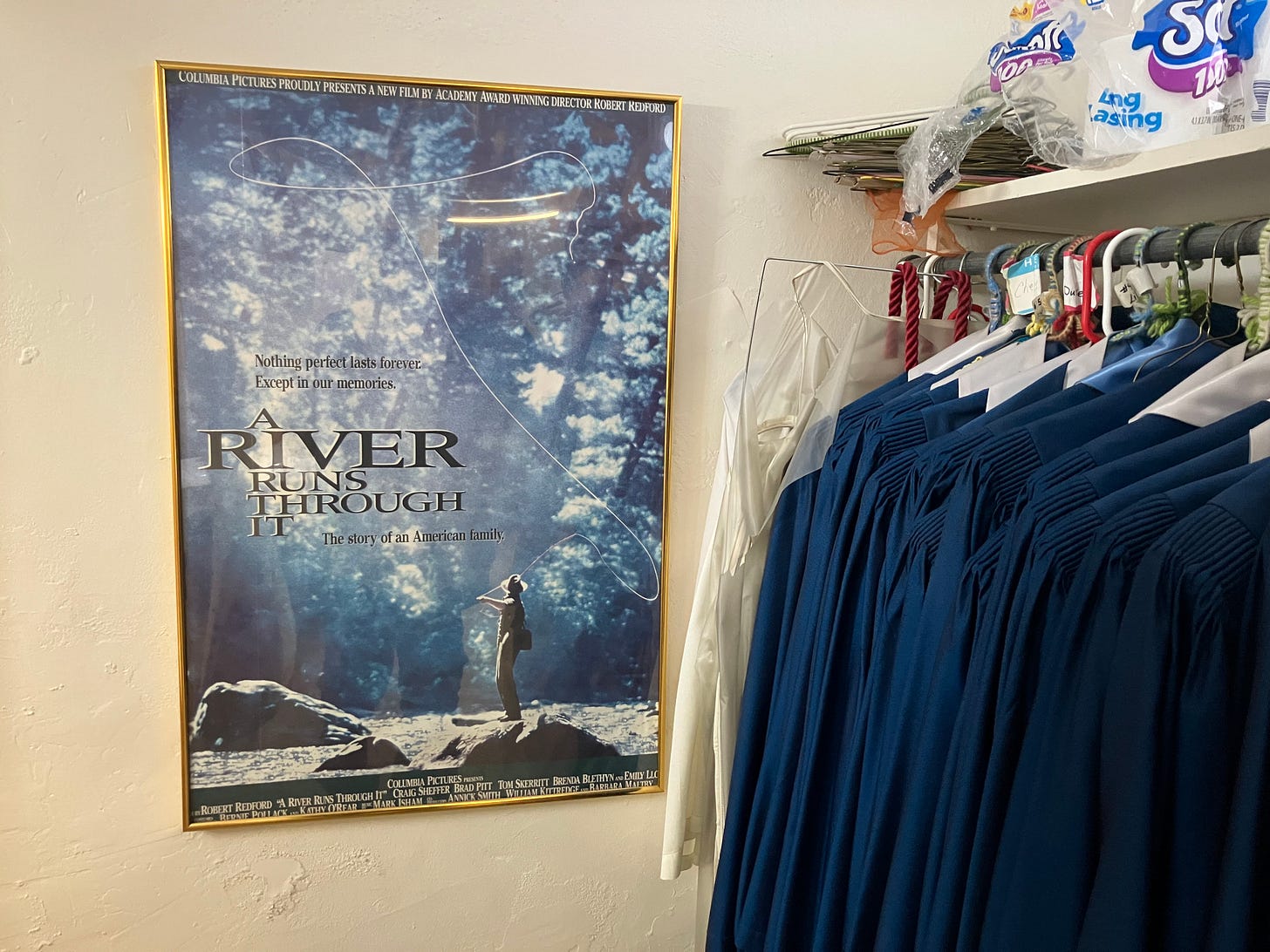
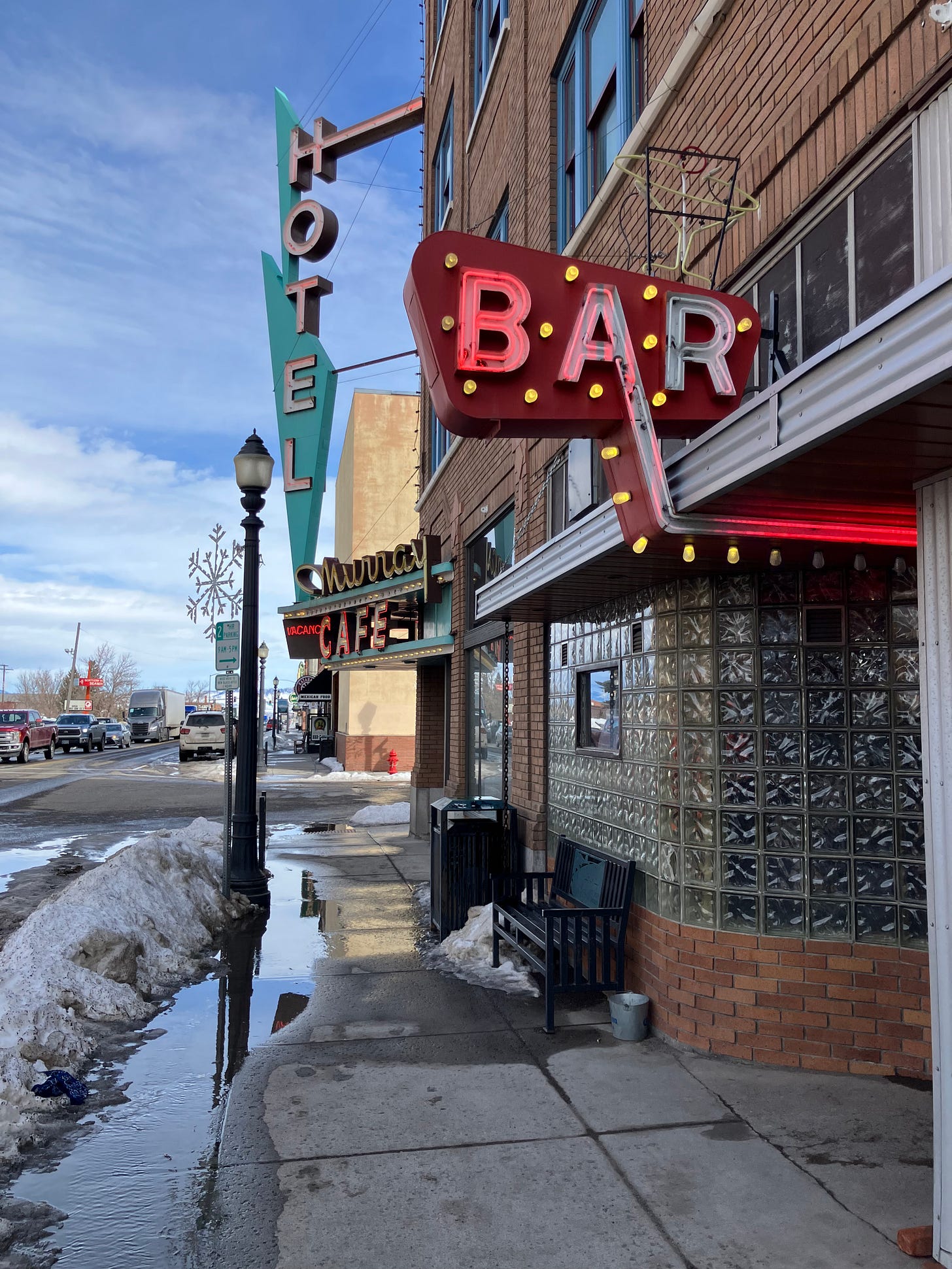
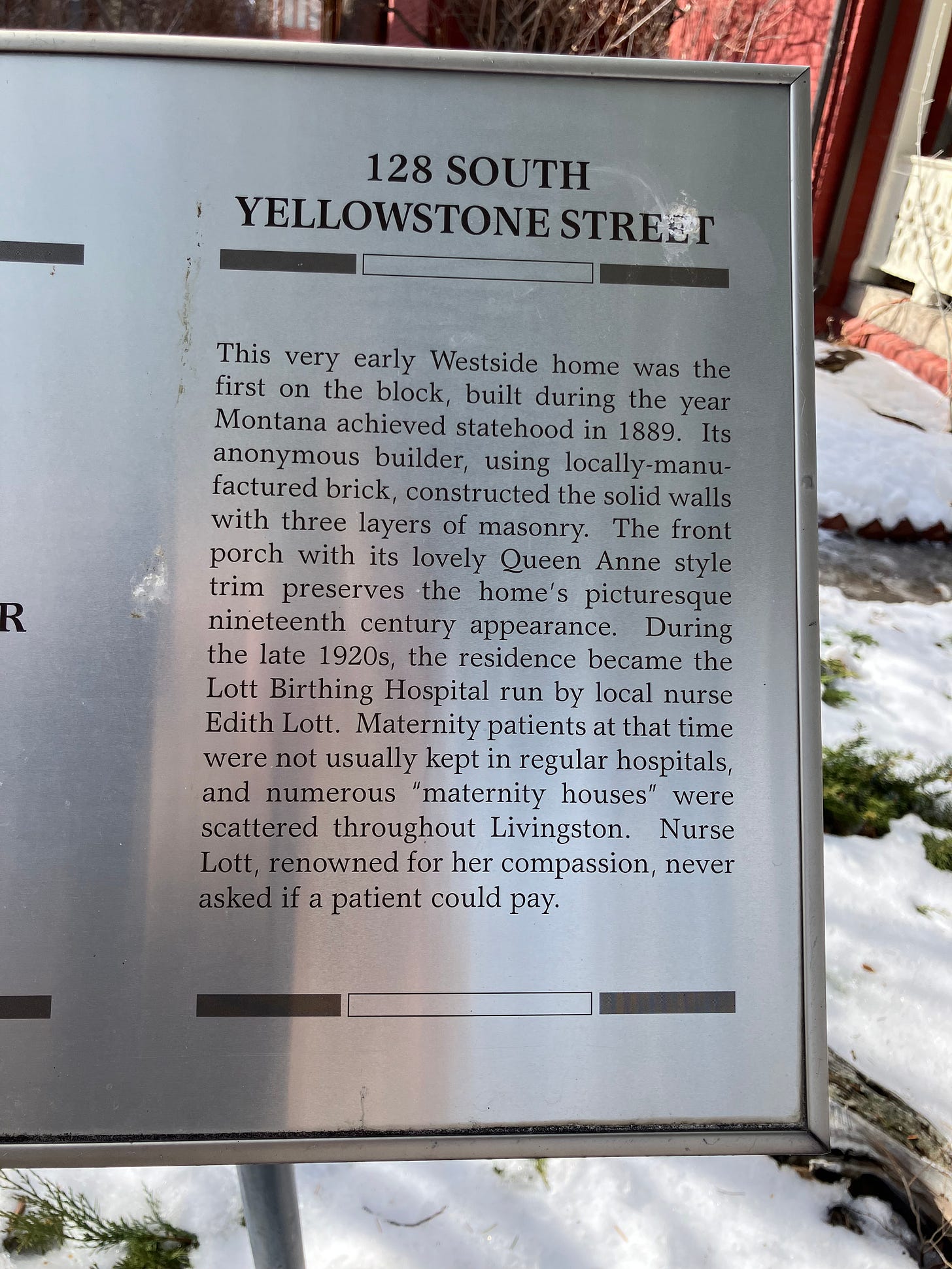
next: North Dakota



